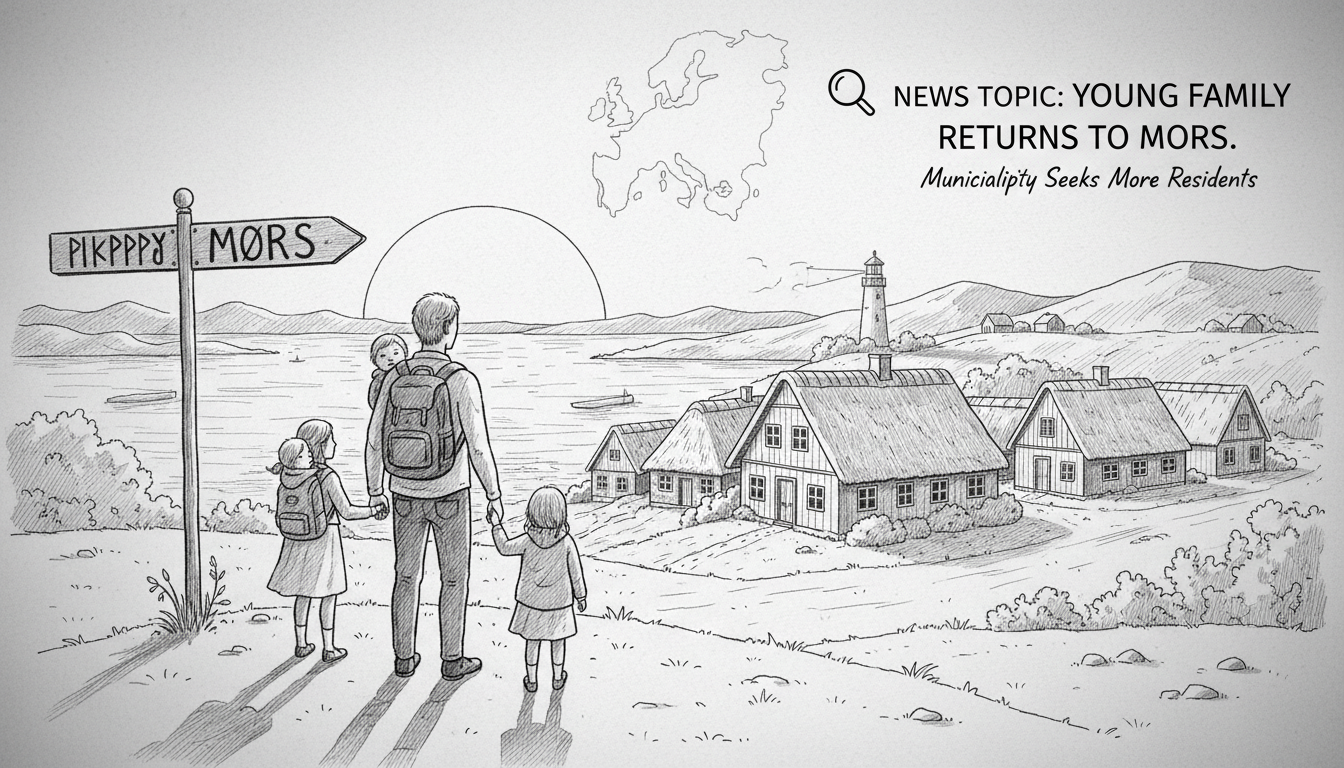Rasmus Bunk and Kamilla Svane Bech represent the ideal newcomers that every Danish municipality hopes to attract. This young, well-educated couple with two small children has returned to their childhood home of Mors, buying a house and committing to stay long-term. Their decision comes as Morsø Municipality faces severe population decline, making their homecoming particularly significant for local officials.
The couple states they belong on the island with complete conviction. Both grew up in Mors before leaving for education and career opportunities. Now they have chosen to raise their own family where they were raised. Their story highlights a critical challenge facing many rural Nordic communities. These areas struggle to retain young residents and attract new families despite offering quality of life advantages.
Morsø Municipality's population continues to drop dramatically. Local politicians identify reversing this trend as one of their most pressing challenges. They must determine what actually attracts young families and other newcomers to rural communities. Opinions vary about the most effective approaches.
The situation on Mors reflects broader demographic patterns across rural Scandinavia. Many Nordic municipalities outside major urban centers face similar population declines. Young people often leave for education and employment, while too few return or arrive from elsewhere. This creates aging populations and strains local services and economies.
What does it take to attract more families to rural Danish communities? The answer involves multiple factors. Housing availability, job opportunities, childcare facilities, and community infrastructure all play crucial roles. Municipal governments must coordinate these elements effectively.
Local officials face the complex task of making their communities attractive to potential newcomers. They must balance immediate needs with long-term planning. Successful strategies often combine economic development with quality of life improvements. The competition for young families extends across municipal boundaries throughout Denmark.
The return of Rasmus and Kamilla offers hope but also underscores the scale of the challenge. For every family that chooses a rural community, many more select urban areas. Municipal leaders must understand what motivates these decisions and respond accordingly.
This demographic challenge affects school systems, healthcare services, and local businesses. A declining population means fewer customers for shops and services, potentially creating a downward spiral. Municipal governments work to break this cycle through strategic investments and targeted marketing.
The couple's story demonstrates that emotional connections can outweigh practical considerations. Their deep roots in Mors influenced their decision significantly. Municipalities seeking new residents might leverage existing connections with former residents while also appealing to completely new audiences.
Local governments throughout the Nordic region monitor these demographic trends closely. They share strategies and learn from each other's successes and failures. The fundamental question remains: how can rural communities become more attractive to the young families they need to thrive?
